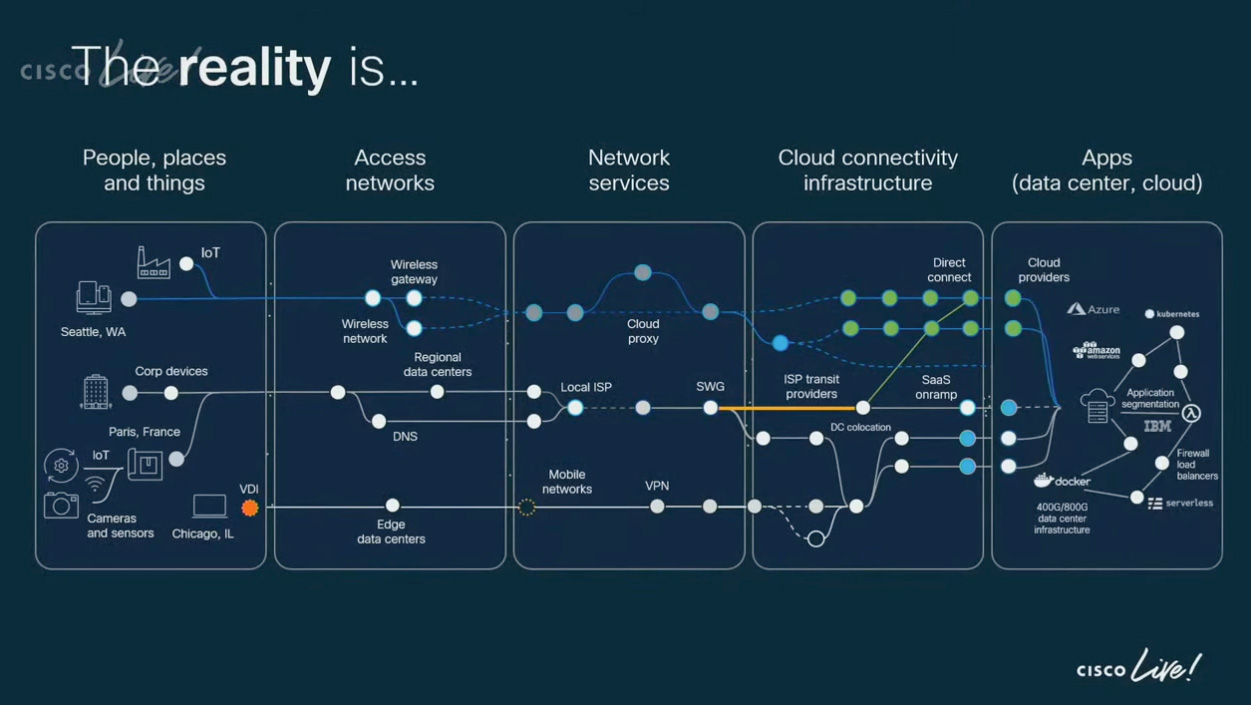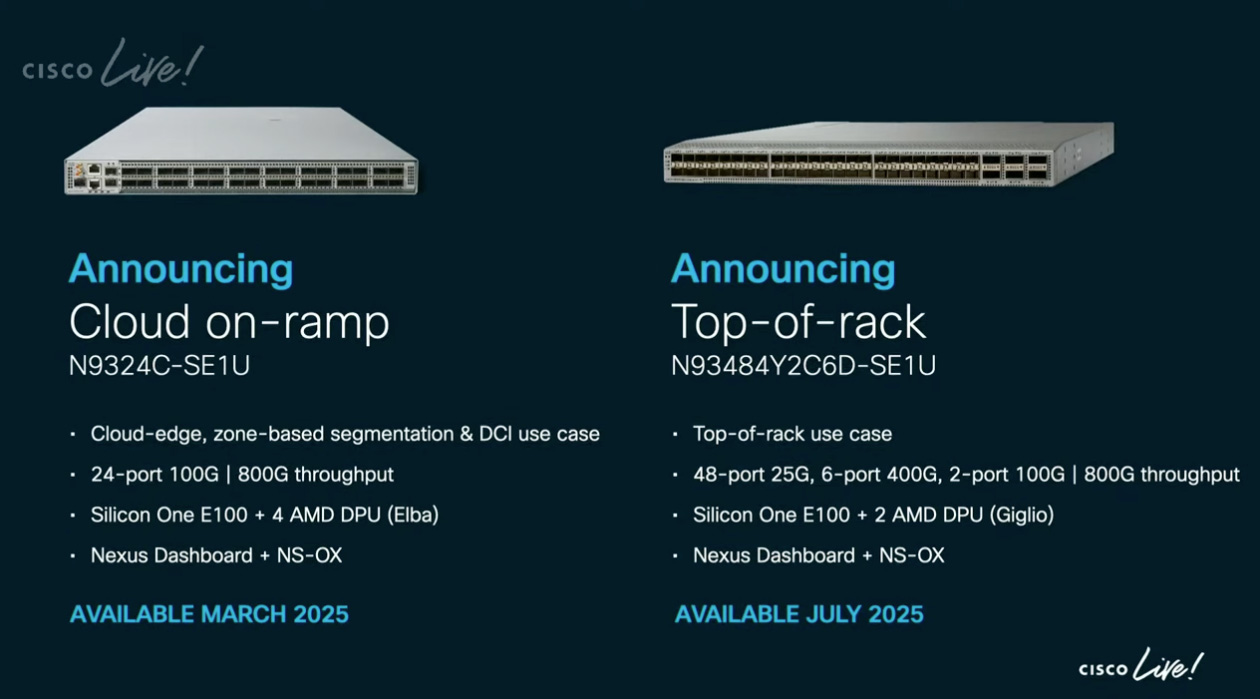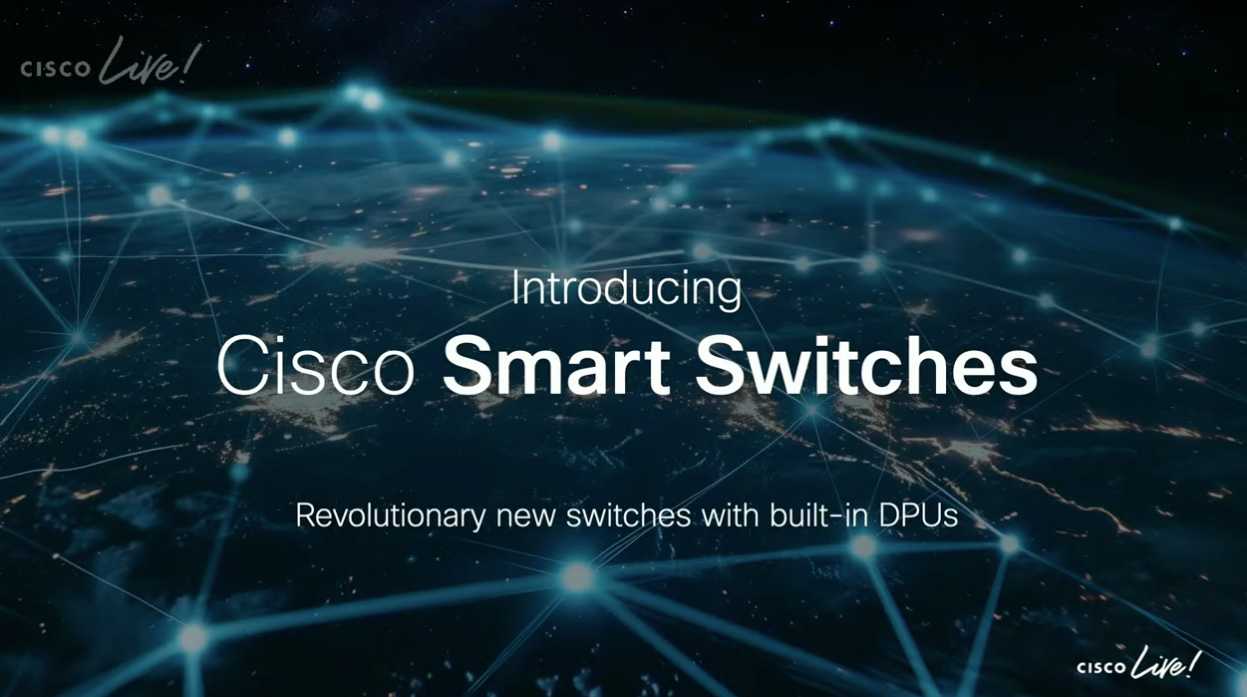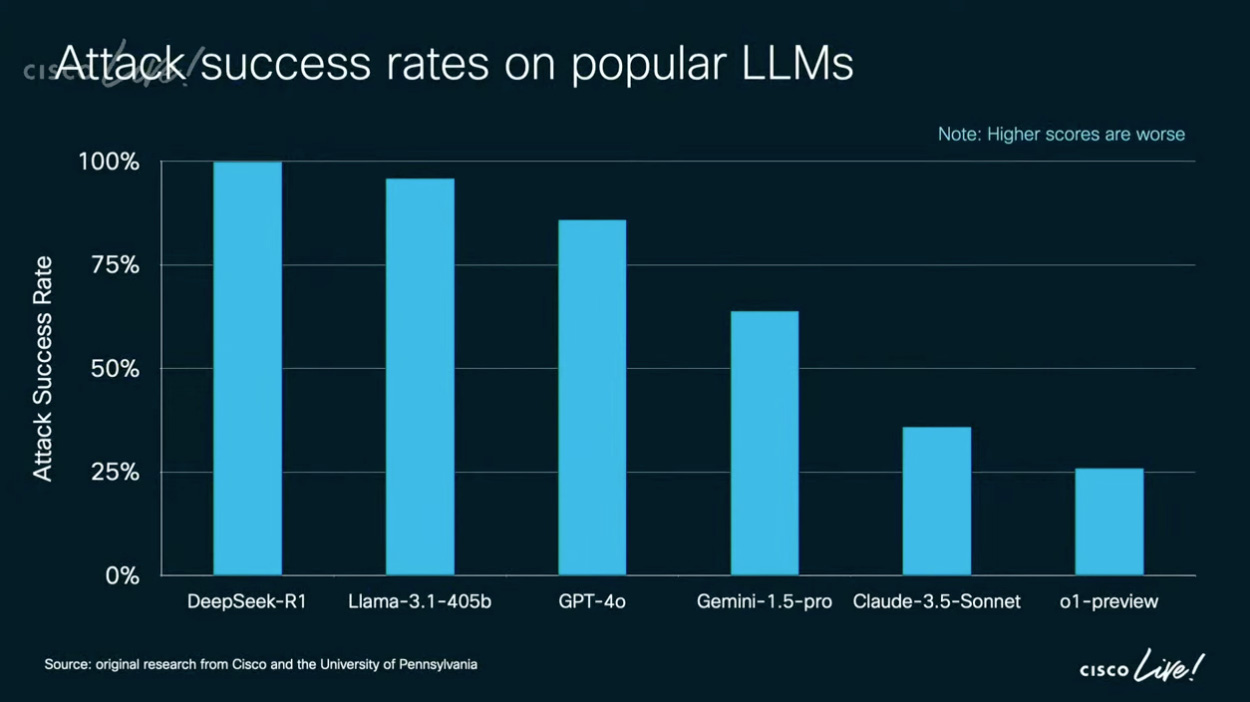This article summarizes key insights and announcements from Cisco Live 2025, held in Amsterdam in February 2025. As a Director of Engineering attending this premier technology event, I had the opportunity to participate in strategic keynote sessions, engage with Cisco leadership, and gain first-hand exposure to Cisco's latest innovations and future direction. The following analysis combines official announcements with personal observations from the event, providing a comprehensive view of Cisco's strategy for addressing modern technological challenges.
The Platform Advantage: Integration at Every Level
As Cisco celebrates its 40th anniversary, the company demonstrates how its extensive networking experience positions it to address the challenges of an AI-driven world. At the recent Cisco Live event, company leaders outlined a comprehensive vision that integrates AI, security, and networking into a cohesive platform strategy, emphasizing practical business value over technological hype.
Cisco's strategy distinguishes itself through its comprehensive technology stack integration — from silicon to systems to software. As Jeetu Patel, EVP and Chief Product Officer, emphasized, Cisco's core philosophy revolves around three key principles:
• Building products that people genuinely love
• Maintaining "quality as priority zero"
• Thinking asymmetrically rather than linearly — aiming to be 10x better than competitors
The company's unique position as one of the first AI-security networking companies in the world, combined with its experience serving data centers, service providers, and enterprises, enables it to build a platform that addresses complex technological challenges while maintaining consistency and security.

Current State of AI Adoption and Challenges
The keynote presentations revealed striking statistics about AI readiness:
• Only 13% of companies globally are prepared to leverage AI technologies fully
• In Europe, this number drops to 7%
• 85% of companies have less than 18 months to deploy an AI strategy before facing negative business impacts
• Network and infrastructure complexity continues to grow exponentially
• 25% of skilled professionals will retire soon, creating a significant workforce challenge
These statistics mirror the challenges we encounter daily in the network infrastructure space. The low AI readiness numbers, particularly in Europe, reflect the real struggle organizations face in modernizing their infrastructure to support AI initiatives. Many of our clients are grappling with similar issues: while they recognize the need for AI integration, they often lack the foundational infrastructure to support it effectively.
The 18-month timeline for AI strategy deployment is particularly critical for infrastructure providers and their clients. This urgency is driving a rapid shift in how organizations approach their network architecture. We're seeing increased demand for solutions that can handle AI workloads while maintaining security and performance — exactly the challenge that Cisco's new Smart Switches aim to address.
The workforce challenge is perhaps the most immediately pressing issue. With 25% of skilled professionals approaching retirement, organizations are increasingly looking for ways to automate and simplify their infrastructure management. This demographic shift is accelerating the adoption of AI-assisted management tools and automated security solutions, making Cisco's focus on automation and AI-powered management particularly timely.
From our experience in the field, these challenges are interrelated — the complexity of modern networks makes them increasingly difficult to manage manually, while the shrinking workforce makes automation not just desirable but essential. This convergence of challenges makes Cisco's integrated platform approach, combining networking, security, and AI capabilities, especially relevant for today's enterprise needs.
Comprehensive Platform Solutions
1. AI-Ready Data Centers
Tom Gillis, SVP and General Manager of Cisco Security, Data Center, Internet & Cloud Infrastructure Group, emphasized how the foundation of modern data centers is evolving. While Moore's Law continues to drive server performance improvements, the introduction of GPUs has created a paradigm shift, enabling parallel processing that's 10x faster than traditional approaches.
This architectural shift is particularly significant for modern enterprise computing needs. AI and ML workloads require substantial compute power, but their inherently parallel nature presents both opportunities and challenges. While these workloads can be effectively distributed across parallel computation units to accelerate results, traditional networking processes often remain tied to the CPU, creating potential bottlenecks in system performance.
This is where DPUs (Data Processing Units) become crucial. DPUs can process data and metadata at the same performance level as AI/ML hardware accelerators, enabling a more balanced and efficient system architecture. By offloading networking and security functions to DPUs, organizations can ensure that their CPU resources remain available for core business applications while specialized hardware handles specific workloads optimally.
A practical example of this approach can be seen in our implementation of an AI-based Web Application Firewall that operates entirely on hardware accelerators. By enabling direct communication between DPUs and GPUs, this solution completely offloads security processing from the CPU. This innovative approach, detailed in our whitepaper (WAF implementation that leverages DPUs), demonstrates how hardware acceleration can revolutionize security applications. We'll be exploring this solution further in an upcoming webinar, where we'll showcase how this architecture achieves improved performance and reduced latency while maintaining robust security capabilities.
The impact of this architecture on business operations is substantial. When networking and security processing can be performed independently of the main server CPU, the entire system becomes more efficient and secure. DPUs effectively remove CPU bottlenecks, enabling better resource utilization and improved performance for various workloads, especially those of AI/ML applications. This architectural approach leads to significant improvements in terms of performance, power efficiency, and latency — all critical factors in modern data center operations.
Cisco's implementation of DPUs in its Smart Switches represents a significant step toward this optimized architecture. By bringing processing capabilities closer to the network, these solutions enable more efficient handling of both networking and security functions while maintaining the performance levels required for AI/ML workloads. This aligns perfectly with our experience in developing hardware-accelerated solutions, confirming that the industry is moving toward more distributed and efficient processing architectures. To support this transformation, Cisco is introducing several groundbreaking products:
New Server Solutions
Designed to address the growing demands of AI workloads, these servers represent a significant leap in processing capabilities:
• CISCO UCS C845A M8 Rack Server\
- Flexible options supporting 2-8 NVIDIA GPUs\
- Optimized for RAG and inferencing\
- Available May 2025
• UCS C885A Server: 8-GPU server for data-intensive workloads

Revolutionary Smart Switches Tom Gillis introduced these as a completely new category of device, eliminating traditional CLI management in favor of simplified operations. These switches represent a fusion of security and networking capabilities in a single device:
• Cloud on-ramp switch (N9324C-SE1U)
- Available March 2025
- 24-port 100G | 800G throughput
- Silicon One E100 + 4 AMD DPU (Elba)
- Cloud-edge, zone-based segmentation capabilities
• Top-of-rack switch (N93484Y2C6D-SE1U)
- Available July 2025
- 48-port 25G, 6-port 400G, 2-port 100G | 800G throughput
- Silicon One E100 + 2 AMD DPU (Giglio)

The inclusion of DPUs in these switches is particularly significant, as explained by Gillis, because it allows security functions to be performed directly on the switch rather than requiring separate appliances. This approach brings security closer to the applications and enables the deployment of "micro firewalls" that can be individually configured for specific workloads.
2. Security Integration
Tom Gillis and Jeetu Patel emphasized that traditional security models need to evolve to match the distributed nature of modern applications.
This shift from traditional security models to network-integrated security is particularly significant. Historically, security has been implemented as overlay solutions — separate appliances or software layers added on top of existing infrastructure. This approach often creates bottlenecks, increases latency, and can leave gaps in protection as traffic moves between security checkpoints.
In our work with infrastructure security, we've observed that moving security functions closer to the data path - directly into the network fabric - provides significant advantages. Our experience with hardware-accelerated security solutions, such as our WAF implementation that leverages DPUs, has demonstrated that integrating security at the hardware level not only improves performance but also enables more comprehensive protection. When security is built into the network fabric itself, threats can be detected and mitigated before they reach application layers, while maintaining the performance levels required for modern applications.
The Enhanced Cloud Protection Suite embodies this new philosophy through a multi-layered approach that aligns with these principles of integrated, distributed security:
Sample core architecture:
- Traditional firewall capabilities serving as the foundation
- Secure workload protection for cloud-native applications
- Modern network fabric (leveraging Isovalent acquisition) for comprehensive visibility
- Hypershield - distributed security layer running directly in front of microservices
- DPU-based switches enabling native security integration at the network level
This architecture represents a significant shift from traditional security models. As explained in the keynote, security is now built directly into the network fabric, allowing for "a million micro firewalls, individually configured" to protect specific workloads. This granular approach ensures security is as close to the applications as possible while maintaining manageability through centralized control.
The suite introduces several innovative features:
-
Unified AI Assistant in Security
- Reduces administration overhead by 70%
- Provides intelligent policy recommendations
- Automates routine security tasks
- Learns from organizational patterns
-
Proactive AI operations
- Identifies potential threats before they materialize
- Continuously monitors system behavior
- Adapts to emerging threat patterns
-
Automated policy testing
- Validates security policies before deployment
- Simulates potential impact of changes
- Ensures compliance with security standards
-
Centralized management through Security Cloud Control
- Single pane of glass for security operations
- Real-time visibility across the entire infrastructure
- Intelligent policy distribution and enforcement
The system is designed to support gradual migration from existing security infrastructure, allowing organizations to "bit by bit migrate to more distributed system" while maintaining robust protection throughout the transition phase.
3. AI Safety and Security
The rapid acceleration of AI adoption presents organizations with unique challenges. As model development costs decrease, as evidenced by developments like DeepSeek, we're seeing a proliferation of AI models in the market. This raises critical questions: How can organizations effectively evaluate these models? How can they maintain visibility over AI usage within their environment?
Cisco's solutions address these pressing concerns head-on. The AI Defense Dashboard provides unprecedented visibility into AI model usage across an organization, offering clear insights into who is using AI models and how they are being utilized. Perhaps most significantly, it revolutionizes the model validation process. Traditionally, validating an AI model could take weeks, but Cisco's solution reduces this to minutes with a simple press of a button.
The importance of this capability was strikingly demonstrated by Cisco's research team's validation results. Cisco’s security testing revealed that DeepSeek failed 100% of its security test cases, while O1-preview failed only 25%. These findings are particularly concerning given these are widely-used models. The implications for organizations considering custom or less-known models are significant.
While Cisco's solution doesn't address every possible AI security challenge, it provides something invaluable: comprehensive observability in an emerging technology space. Given the novelty of AI security challenges, having a solution that offers this level of visibility and validation capability is remarkable. Few solutions in the market approach AI security with such a holistic perspective.
Model Safety and Security checking features:
-
Safety monitoring for:
- Hallucinations
- Hate speech
- Off-topic responses
- Toxicity
- … and many others
-
Security protection against:
- Prompt injection attacks
- Model behavior manipulation
- Unauthorized access
- … and many others
AI Defense Dashboard Features:
- Comprehensive visibility of applications and models
- User activity monitoring
- Rapid model validation
- Real-time attack detection and blocking
- Runtime policy enforcement

4. Future-Proofed Workplaces
Cisco's solutions address a fundamental challenge in today's digital workplace: enabling secure collaboration in an increasingly distributed work environment. Modern professionals work from everywhere - homes, offices, cars, and cafes - creating complex security and connectivity challenges that can't be solved with traditional approaches.
While the technical specifications of its new solutions are impressive, the real significance lies in how they address this core challenge:
New Wi-Fi 7 Infrastructure
-
CW9172I and CW9172H access points
- Energy-efficient designs
- Flexible deployment options
- Tri-radio WiFi 7 performance
- Available February 2025
Advanced Switching Solutions
-
MS150 Stackable Access Switches
- 60W PoE++ density
- Enhanced speeds
- Static routing capabilities
- Perpetual and fast PoS
- Improved resilience
- Adaptive policy framework
The cornerstone of these workplace innovations is the AI-Powered Collaboration suite, particularly the AI Webex Agent capabilities:
AI-Powered Collaboration
-
AI Webex Agent
- Virtual AI agents matching human operator capabilities
- Custom agent creation through Webex AI Agent Studio
-
AI Assistant in Networking (private beta)
- Routine task automation
- Accelerated problem resolution
- Real-time insight generation
What makes these solutions particularly significant is their approach to balancing security with collaboration needs. Cisco's AI Webex Agent Studio represents a breakthrough in how organizations can implement AI agents in their workplaces. It provides the security required for enterprise operations while maintaining the flexibility and freedom that modern work demands. By simplifying agent creation and deployment while maintaining robust security controls, it enables organizations to embrace AI-powered collaboration without compromising on security or user experience.
5. Digital Resilience
Cisco's end-to-end observability framework represents more than just a collection of tools —it's a strategic integration of key capabilities that address the growing complexity of modern infrastructure monitoring and security. The company’s acquisition of Splunk has proven particularly significant, with its impact now visible across Cisco's product portfolio.
Integrated Platforms:
- IT Service Intelligence for business service monitoring
- AppDynamics for hybrid and three-tier environments
- Observability Cloud for cloud-native solutions
- Splunk Platform as a unified data foundation
Enhanced Security Integration:
-
Meraki integration with XDR
- Sophisticated threat detection
- Streamlined network operations
- Rapid incident resolution
- Available February 2025
-
AI Assistant in Splunk Enterprise Security
- Natural language workflow guidance
- Accelerated incident resolution
- Advanced outcome optimization
What makes this integration particularly powerful is how it enhances Cisco's security capabilities. The Meraki integration with XDR demonstrates this perfectly — by combining Meraki's extensive network visibility with XDR's threat detection capabilities, organizations can not only detect threats more effectively but also respond to them more quickly. Meraki acts as both a rich data source and an enforcement point, enabling the kind of closed-loop security that modern enterprises need.
The addition of AI assistance in Splunk Enterprise Security is more than just a feature upgrade — it represents a shift toward more intuitive interaction with security data. By enabling natural language workflow guidance, security teams can focus on addressing threats rather than navigating complex interfaces. This is particularly valuable given the increasing sophistication of security threats and the growing volume of security data that teams need to process.
This framework demonstrates how Cisco is leveraging the Splunk acquisition to create practical value across its portfolio. The integration isn't just technical — it's about creating a more cohesive and accessible approach to infrastructure visibility and security.
Strategic Impact and Future Outlook
Cisco's platform strategy reflects a key understanding of today's technology landscape: AI isn't just another feature — it needs to be integrated thoughtfully and with real business value in mind. At Cisco Live, both Oliver Tuszik and Jeetu Patel emphasized moving beyond the AI hype cycle to focus on scalable, secure, practical benefits. This resonates with what we see in the field — companies don't need theoretical AI capabilities, they need solutions that can be implemented and managed effectively.
What stands out is Cisco's focus on building a complete technology stack from silicon to software, all designed to work together. While this approach isn't unique in the industry, its integration of DPUs at the switch level and emphasis on distributed security show they understand modern infrastructure challenges. With 40 years of networking experience, they're well-positioned to understand how networks need to evolve — but the real test will be in implementation.
Cisco’s commitment to opening up its platform, as demonstrated by the Splunk integration for data backbone capabilities, suggests they understand that no single vendor can solve all challenges alone. This aligns with what we're seeing in the market — successful AI integration requires an ecosystem approach, combining specialized capabilities from different providers while maintaining consistent security and management frameworks.
Personal Perspective: Insights from Cisco Live
As a Director of Engineering leading a delivery group in the networking and infrastructure field, attending Cisco Live provided valuable insights into the future of technology solutions. The event offered unique opportunities to meet with Cisco leadership and partners, gaining first-hand perspectives on the company's strategic direction.
The conversations with Cisco executives and partners during the event revealed a deep understanding of the challenges facing modern enterprises. What stood out was Cisco's practical approach to AI integration—rather than following the hype, Cisco is focused on delivering tangible business value.
One particularly striking aspect was Cisco's emphasis on platform integration. As someone responsible for delivery and business development in the networking domain, I can attest to the critical importance of having a unified platform that seamlessly combines networking, security, and AI capabilities. The announced Smart Switches with built-in DPUs represent exactly the kind of innovation needed in the field — bringing security closer to the network while simplifying management.

The focus on automation and AI-assisted management tools aligns perfectly with the industry's needs, especially given the challenges of workforce evolution and increasing system complexity. As a former software engineer who now leads technical teams, I appreciate how Cisco's solutions address both the technical depth required for complex systems and the practical needs of day-to-day operations.
The event also highlighted Cisco's commitment to its partner ecosystem. Through numerous discussions with other partners and system integrators, it became clear that Cisco's platform strategy is designed to enable rather than restrict by providing the tools and capabilities needed to build custom solutions while maintaining security and reliability. This approach is crucial for organizations that work at the intersection of software development and network infrastructure.
Looking ahead, Cisco's direction suggests exciting possibilities for the networking industry. Its investment in AI security and model validation tools demonstrates foresight in addressing emerging challenges, while its focus on practical implementation ensures these advanced capabilities can be effectively deployed in real-world scenarios.







